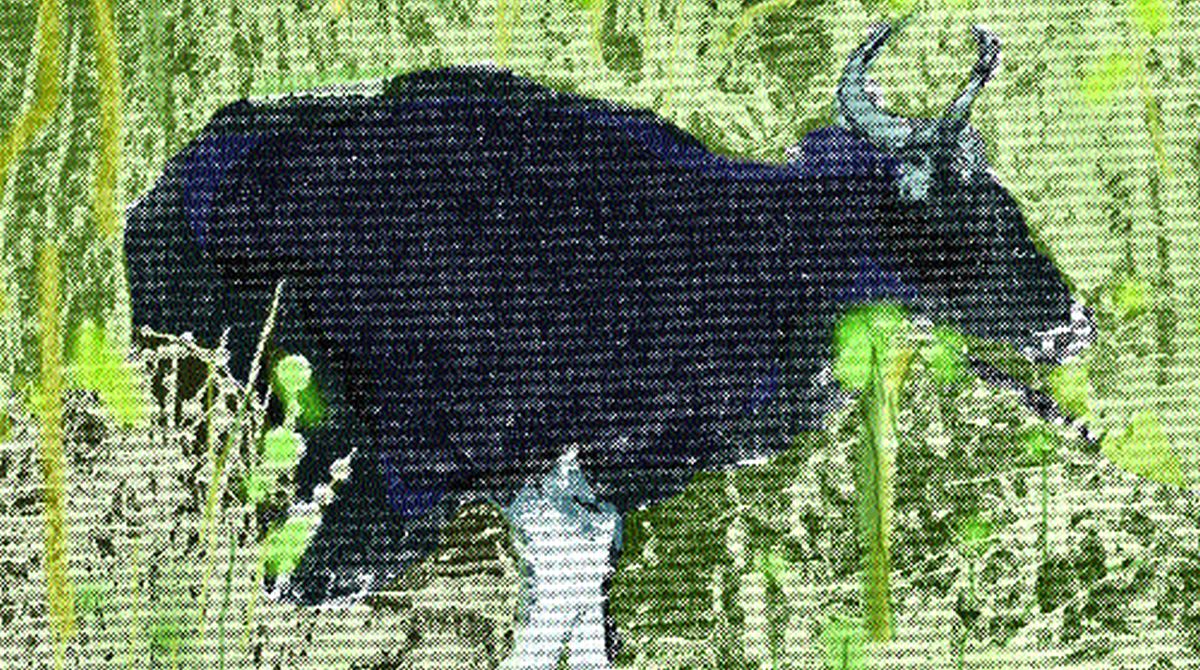Now, a bull elephant claims life at Barjora village
Within just one-and-a-half months, the wild elephants claimed the life of another man at Barjora village here today.

The problem in the Palamau National park is water in summer. The drought then is severe, and the water limited to a few small hollows. The elephants go away, but surprisingly the other animals stay on, in spite of the parching heat and the comparative lack of shade of the dry deciduous forest ~ gaur, sambar, chital, pig, rhesus monkeys and the common langur, tigers and leopards, porcupines, hares and a rich variety of birds, including, peafowl, junglefowl and partridges, were all there when I was there in April, when the available water was in two or three shallow, muddy small pools and a few puddles, and only a few trees were in leaf, and the heat and glare of the day were terrific.
I was warned that the heat would be extreme. You people from the South, I was told, have no idea of what the summer can be like ~ be on your guard, or the heat will overpower you. It was even more oppressively hot than in the warmest of our Southern plains, but it is with pride that I add that before June was out I had experienced an even more hostile heat, in Dudwa in UP.
Why do the animals stay on, when the drought and heat are so acute, why don’t they follow the elephants to wherever they go, where there is much more water and shade? Obviously because, while the elephants are comparatively few in number and constitute a shifting population, and just cannot do without wallows and baths everyday the other animals are more sophisticated in their attitude to the daily bath and will have to crowd in on already existing resident populations of their own kind, if they were to move out.
Advertisement
That does not hold for the gaur. Like elephants, gaur are given to seasonal wanderings, and usually shift from place to place as periodic needs dictate. In many parts of India there are plants which, in the dry heat, serve to supplement the slender water resources of the place, and which the animals eat in bulk; most of these plants grow in streamside thickets ~ Ardisia solanacea is an example. I looked for this and other similar plants in the Palamau park, but did not find them, this of course, proves nothing; it could be that these plants were there in the places where I did not look, or that the plants I did see had, unknown to me, the same potential as reservoirs of the life-giving fluid.
The fact remains that even when the water scarcity is acute, most of the animals of Palamau stay on there. In view of this, it is important to try and improve the water resources of the area, to further encourage this strong parochial feeling in the resident faunal populations, and the Forest Department authorities are doing everything they can to provide more water. In spite of its utterly desiccated looks, Palamau has obviously subsoil water even in summer. The coolies get water by digging a hole in the sandy bed of streams, and alongside the dry streams the vegetation is green.
The thing that impressed me powerfully in Bihar was the quite authentic interest of many people in the Forest Department in the wild life and in wild life photography. They do not believe in being “tactful” towards poachers, and I consider this realistic attitude most heartening, for I am convinced that in our country today the main need of wild life conservation is strict protection. In many ways the authorities here are doing what they can for their wild life, but perhaps an organized wild life department armed with powers, and no less important, the stoppage of all forestry work in certain areas which are faunally favoured (as Palamau is) will result in Bihar’s wild life effort being deservedly crowned with success.
This was published on 12 January 1969
Advertisement